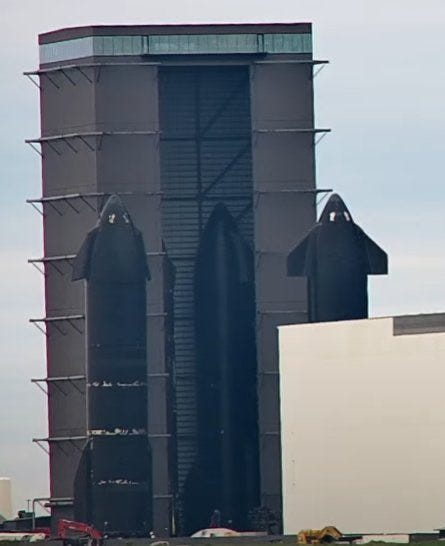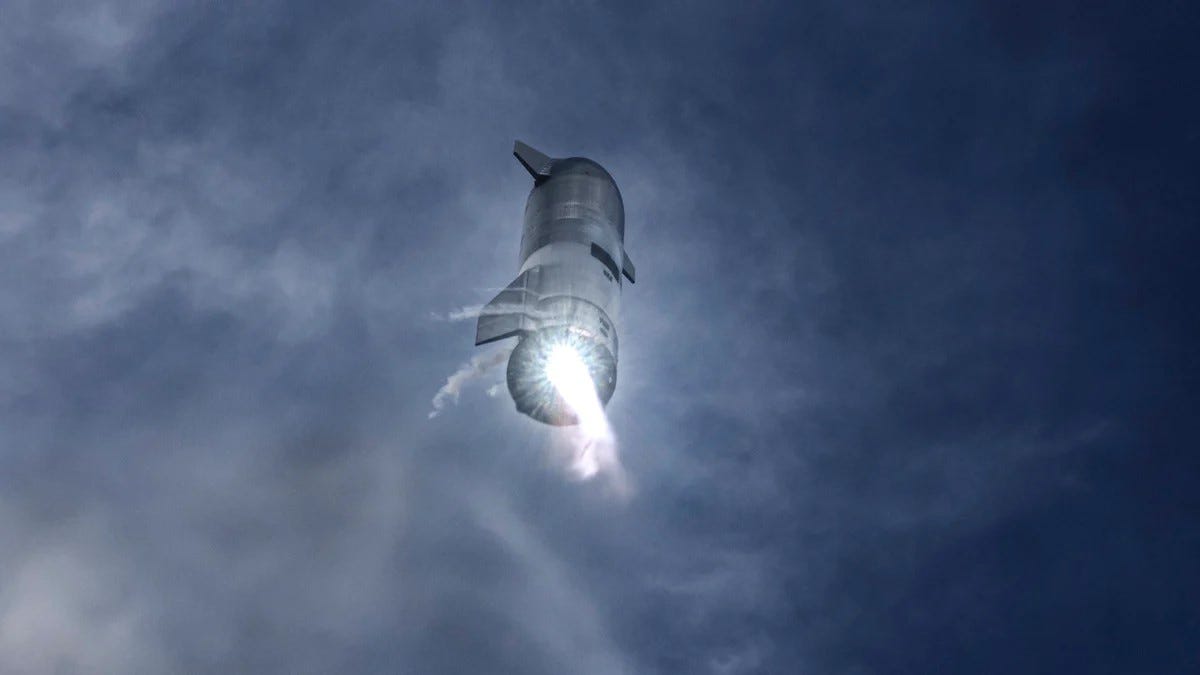Recently SpaceX dropped a bombshell: the current Starship will be discontinued – to make way for a new and improved version!

At present, there have only been 2 Integrated Flight Tests (IFT) of their groundbreaking Starship spacecraft but nevertheless SpaceX are ready to build something even better.
“Version 2 of the ship holds more propellant, reduces dry mass and improves reliability” ~ Elon Musk
Version 2 Breakdown
The design of any rocket is based on the capabilities of its rocket engine. Current Starships use the Raptor 2 engine but SpaceX have the next iteration waiting in the wings – called Raptor 3. The following table illustrates the difference in performance with the Sea Level Raptor to give some idea of the engine’s potential: -
“I’m very excited about the next-gen Raptor engine that is robust enough not to require a heat shield. Will also have more thrust, higher Isp and many other improvements.” ~ Elon Musk
The additional thrust supplied by Raptor 3 should allow them to increase the propellant tank capacity, particularly as they also intend to increase the number of engines fitted from 6 to 9.
“Ship will probably stretch by another 10m or so...And we need to add 3 more Raptor Vacuum engines, because it’s inevitable ” ~ Elon Musk
It might seem anomalous that Starship’s engine count will increase and the propellant tanks will stretch, yet the ship’s dry weight (i.e. its mass without propellant) should actually reduce. The additional 10m of hull could add 9mt and the extra 3 Raptor Vacs (which are heavier than Sea Level engines) should add at least another 6mt. However, the current version Starship masses ~120mt, much of which is accounted for by the ship’s hull, pressure domes, control fins and nose cone. No doubt they could shave considerable weight in these key areas now they know how it performs in-flight. For example, the ship’s hull is made of 3.97mm thick stainless steel, which suggests it’s overengineered as the same gauge steel is used for the booster, which has to support considerably more weight. Even a small reduction in hull thickness to 3.7mm would shave 2 tons off the dry weight, while maintaining a sufficient safety factor (i.e. 1.4 x maximum load).
Likewise SpaceX have developed a lighter pressure dome, called an elliptical dome or Edome for short. One of these pressure bulkheads is used to divide the propellant tank into two sections (to carry oxygen and methane separately) and another is used to cap off the top of the tank. Again each Edome could save at least a ton in weight – or roughly the mass of a Raptor 3.
Similarly the control surfaces used for Starship, called body fins or elonerons, are purposefully enormous, no doubt because the design engineers decided more control authority would be better than less, and to err on the side of caution. However, they unearthed a rich seam of data from the earlier Starship test flights, providing the confidence necessary to reduce the control surface area considerably, likely saving a literal ton of mass per vehicle.
A good case could also be made the nose cone is similarly overengineered. During IFT-2 the Flight Termination System (FTS) was activated as a safety measure, after Starship S25 failed to achieve orbital velocity. Ideally these FTS charges should shred the vehicle, except in this case the whole forward section somehow survived the explosion, suggesting the nose cone is too robust and could easily slim down a little. During early development Elon joked the nose cone “should be more pointy” – which the engineers took literally, likely adding a ton of ‘aesthetic mass’ to the vehicle…
Last but not least, losing the heat shields from all Raptor engines could save another couple of tons at least. These shields are substantial as they are designed to stop the spread of fragmentation if an engine should explode, in a worst case scenario.
Why Change
These changes should considerably improve Starship’s performance, the added thrust alone will reduce the time taken to reach orbit, reducing the amount of propellant used to fight Earth’s gravity. Note, if the new version Raptors are also fitted to the Super Heavy booster….this would increase Starship’s payload capacity to an amazing 200mt – roughly twice the payload of a Saturn V moon rocket!
“Looks like we can increase Raptor thrust by ~20% to reach 9,000 tons (20 million lbs) of force at sea level...and deliver over 200 tons of payload to a useful orbit with full & rapid reusability.” ~ Elon Musk.
This is important because Starship will normally arrive in Low Earth Orbit (LEO) with tanks empty, so needs to be refilled by a tanker Starship before it can continue-on to the moon or Mars. The Starship spacecraft has a huge propellant capacity, ~1,200mt, hence the amount of propellant these tankers can deliver to LEO is crucial. For example: NASA intend to use Starship as a Human Landing System (HLS) on Artemis moon missions, although originally they suggested it might take up to 18 tanker flights to fully refill an HLS in orbit. However, using Starship Version 2 figures the number of tanker flights required should drop to 6, or possibly fewer considering the tanker variant will be a stripped down version with less dry mass, which should allow even more more payload (i.e. propellant) to be carried. Essentially, every ton of weight they strip from Starship will increase the vehicle’s payload capacity on a 1 for 1 basis.
In Conclusion
SpaceX have the makings of an extraordinary spacecraft with Starship Version 2. They need to weave their magic to somehow reduce the dry mass to their target 100mt but Version 1 appears a fertile field for mass savings, like any prototype vehicle.
In addition, any significant increase in propellant capacity would be a game-changer because it increases the vehicle’s delta-v, both during launch and after being refilled in orbit. In effect this means it can carry more payload or range farther or faster making deep space exploration far more practical. Many technical challenges still lie ahead to make the vehicle fully reusable but with enough energy you can do anything, and there seems no lack of that at SpaceX!
1 https://twitter.com/elonmusk/status/1478125263233990657
2 https://twitter.com/elonmusk/status/1657249739925258240
3 https://www.spacex.com/vehicles/starship/






They need a few more flights and at least one EDL attempt to really gather the data needed for some of these mods. But then a few V2 (Starlinks, HLS related tests), then finally a V3 for customers.
But so much hinges on reuse of SH and to a lesser extent, Starship.
My prediction for Starship V2
Raptor 2.1(more reliable and lighter electric TVC)
Stretched fuel tanks
~3.6mm steel fairing
Edomes
Redesigned fins